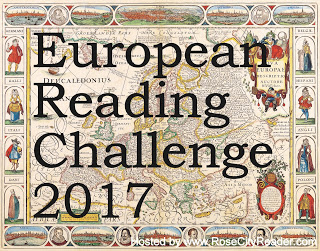I always like to participate in reading challenges because it gives me a focus for my reading. I am planning on doing the following reading challenges in 2019, even though I’m in graduate school.

I enjoyed the Monthly Motif Reading Challenge this year. I don’t think I’ll complete it. I was stumped about what to read for a “Vacation Read” in the summer, so I never did that one. However, I think the motifs for 2019 look interesting, and I’ll give this challenge another whirl. I will try to do the challenge book each month. I am also going to try to do a bit better about reviewing each of the books I read and posting them to the challenge linkup pages. If I commit to completing the challenge, it means reading 12 books that fit the various monthly motifs.

I like to do the Historical Fiction Reading Challenge pretty much every year. Historical Fiction is my favorite genre. I think I’ll go easy this year, though, and just try for the 20th Century Reader level of two books. I am also trying to branch out and try other kinds of books, so it might be good for me to stretch beyond historical fiction.
I also want to try the Reading Women Challenge. I like the fact that this challenge is open-ended. Though there are 24 categories with two bonuses, the goal of the challenge is really just to read as many women as possible. I am going to shoot for completing 12 of the categories, but I’m not sure right now which ones. A lot of them look like fun to me! If I were not in grad school right now, I might try finishing the challenge with 24 books and the bonuses, but I think it might be a bit much for me.
I didn’t do so well last time I tried backlist challenges, but I think that’s because I was doing two of them at the same time. This time, I’m just going to do one. I like the Beat the Backlist Challenge because it has lots of prompts and a Hogwarts House challenge, too. I’m all about that! I’m, of course, competing for Ravenclaw. I think I’ll try to read one book from my backlist for each month, so I’m shooting for 12 books.![]()
That’s it for right now. I’m sure other challenges will catch my eye between now and January 1, and I’ll update this post once I find out about new ones. I usually try to do the R. I. P. Challenge, though I kind of think it’s lost its heart now that Carl isn’t doing it anymore. He was so enthusiastic about it.
I will be creating my challenge progress page in the new year. I’m hoping to find a bit more of a writing rhythm. I lost my balance when I started my doctoral program. Even though I have mostly been able to keep up with my reading, I was not able to keep up with reviewing what I had read. I am not sure how many books I want to commit to reading next year.

 Sky in the Deep by
Sky in the Deep by 


 The Sympathizer by
The Sympathizer by 
 The Miniaturist by
The Miniaturist by 
 In the Shadow of the Banyan by
In the Shadow of the Banyan by 


 Alias Grace by
Alias Grace by 












